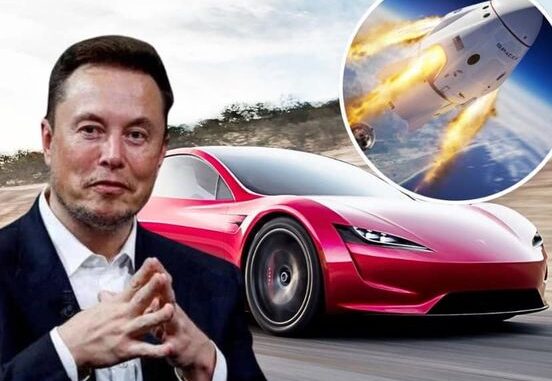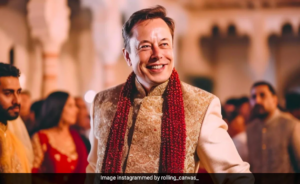
Tesla CEO Elon Musk says anyone who doubts how valuable robotaxis will make the company should test drive its latest self-driving car. A Wall Street analyst did just that – and said the car almost crashed.
The experience of WIlliam Stein, an analyst with Truist Securities, is not unique; others have also reported problems with Tesla’s full self driving, or FSD, feature. But a note from Stein raises questions as to whether the autonomous driving and robotaxis Musk is betting Tesla’s future on are as close as he claims.
Tesla’s FSD driver-assist feature is sold as an $8,000 option. It can navigate city streets and highways, as long as a human driver is ready to take over at any time. Musk claims FSD is safer than a human driver, and he has pegged Tesla’s future on creating a fleet of robotaxis, carrying riders without a driver at the wheel.
“I would encourage anyone to understand the system better to simply try it out, let the car drive you around,” he said on an investors call earlier this month after reporting disappointing second quarter financial results. “Once people use it, the they tend to continue using it. So it’s vastly compelling.”
But there were problems when Truist’s Stein recently tried a special “demo mode” only available to Tesla employees during demonstration drives, he wrote in a note. He wrote it made a number of illegal maneuvers while in FSD mode, including switching lanes on a portion of highway with solid white lines indicating lane changes were prohibited.
In addition “the Model Y accelerated through an intersection as the car in front of us had only partly completed a right-turn. My quick intervention was absolutely required to avoid an otherwise certain accident,” he wrote. “Another intervention was required when a police officer used hand motions to signal to us to pull to the side of the road to allow a funeral procession to pass.”

The system is “no better, arguably worse, than last time” when he tested it in April, Stein wrote.
It wasn’t all doom and gloom, however. Stein’s note said that there were some improvements in FSD from his previous test drive.
“What really impressed us was how well the car adapted to challenging disruptions like lane closures, heavy potholes, and traffic flows that would confuse even experienced human drivers,” he wrote. “The newer FSD version was more active in switching lanes, and we figured out how to set the top speed above 55 (a challenge we highlighted in our last report). The driving felt more natural overall than the prior test drive.”
Self driving is key to Tesla’s future success
Musk argues the company’s planned robotaxi service could quintuple the value of Teslas because of their potential to make their owners’ money independently and to be used far more hours of the day.
He has also said that he believes that Tesla shares could be worth $5 trillion by the end of the decade. That’s trillions more than any company today and far above Tesla’s current market cap of $830 billion.
But the company pushed back plans to roll out details of the robotaxi service originally set for early August to October 10 “to make some important changes that I think would improve the vehicle,” Musk told investors on the earnings call last week.
The company’s own earnings statement cautioned that timing of the start of robotaxi service “depends on technological advancement and regulatory approval.” And while Musk said he’s confident that will be no later than next year, he admitted on the call “my predictions on this have been overly optimistic in the past.”
Tesla, which does not have a public relations staff, did not respond to questions about the Truist note.
